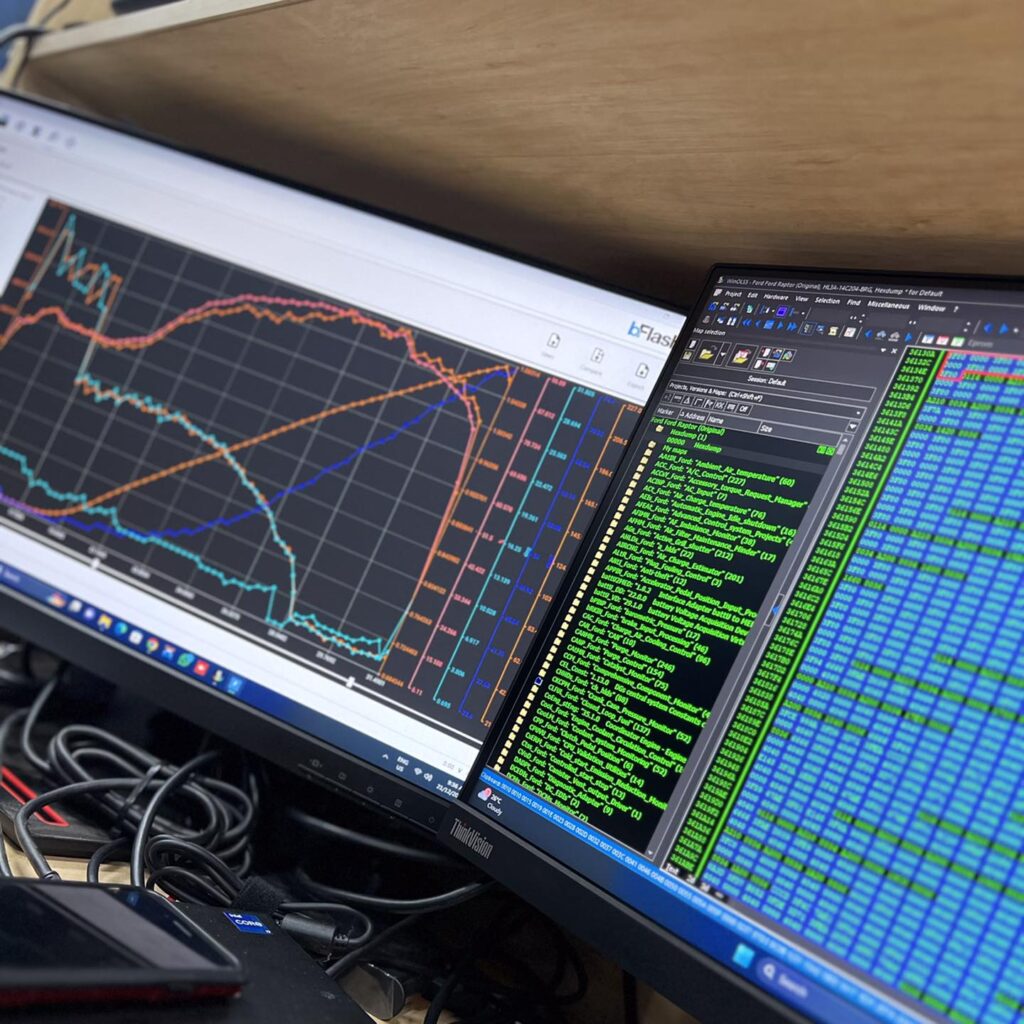At Diesel Tuning Brisbane, we optimise vehicle performance through advanced tuning techniques. One of the most crucial aspects of our work involves reverse engineering binary files and C/C++ code.
This process allows us to delve deep into a vehicle’s electronic control unit (ECU), unlocking the potential for enhanced performance, efficiency, and driving experience.
Understanding ECUs and Their Importance
The ECU is a vehicle’s brain, managing various engine parameters such as fuel injection, ignition timing, and boost control. Manufacturers design ECUs to balance performance, emissions, and fuel economy. However, these factory settings are often conservative to cater to a wide range of driving conditions and regulatory requirements. This is where our expertise in reverse engineering comes into play.

The Process of Reverse Engineering
Binary File Extraction:
- The first step in reverse engineering an ECU involves extracting the binary file from the ECU. This file contains the firmware that controls the engine’s functions. Specialized tools and software are used to read and save this binary file for analysis.
Disassembly and Decompilation:
- Once the binary file is extracted, it is disassembled into assembly code. Disassembly translates the machine code back into a human-readable format. In some cases, decompilation is used to convert the binary file into higher-level C or C++ code, which provides a clearer understanding of the ECU’s logic and structure.
Code Analysis:
- Our engineers meticulously analyze the disassembled or decompiled code to identify key areas that control engine parameters. This step requires a deep understanding of automotive engineering and programming languages. By pinpointing these critical areas, we can determine how to modify the code to achieve desired performance enhancements.
Calibration and Testing:
- After identifying the target parameters, we make precise adjustments to the code. These modifications can include changes to fuel maps, ignition timing, boost pressure, and more. Each change is carefully calibrated to ensure it delivers the intended performance improvements without compromising engine reliability.
Reflashing the ECU:
- Once the new calibration is complete, the modified binary file is written back to the ECU through a process called reflashing. This updated firmware is now ready to control the engine with the new settings.
Performance Testing:
- The final step involves rigorous testing to validate the changes. We use dynamometers and road tests to measure performance gains and ensure that the modifications work seamlessly under real-world conditions. Fine-tuning may be necessary to perfect the calibration.



















